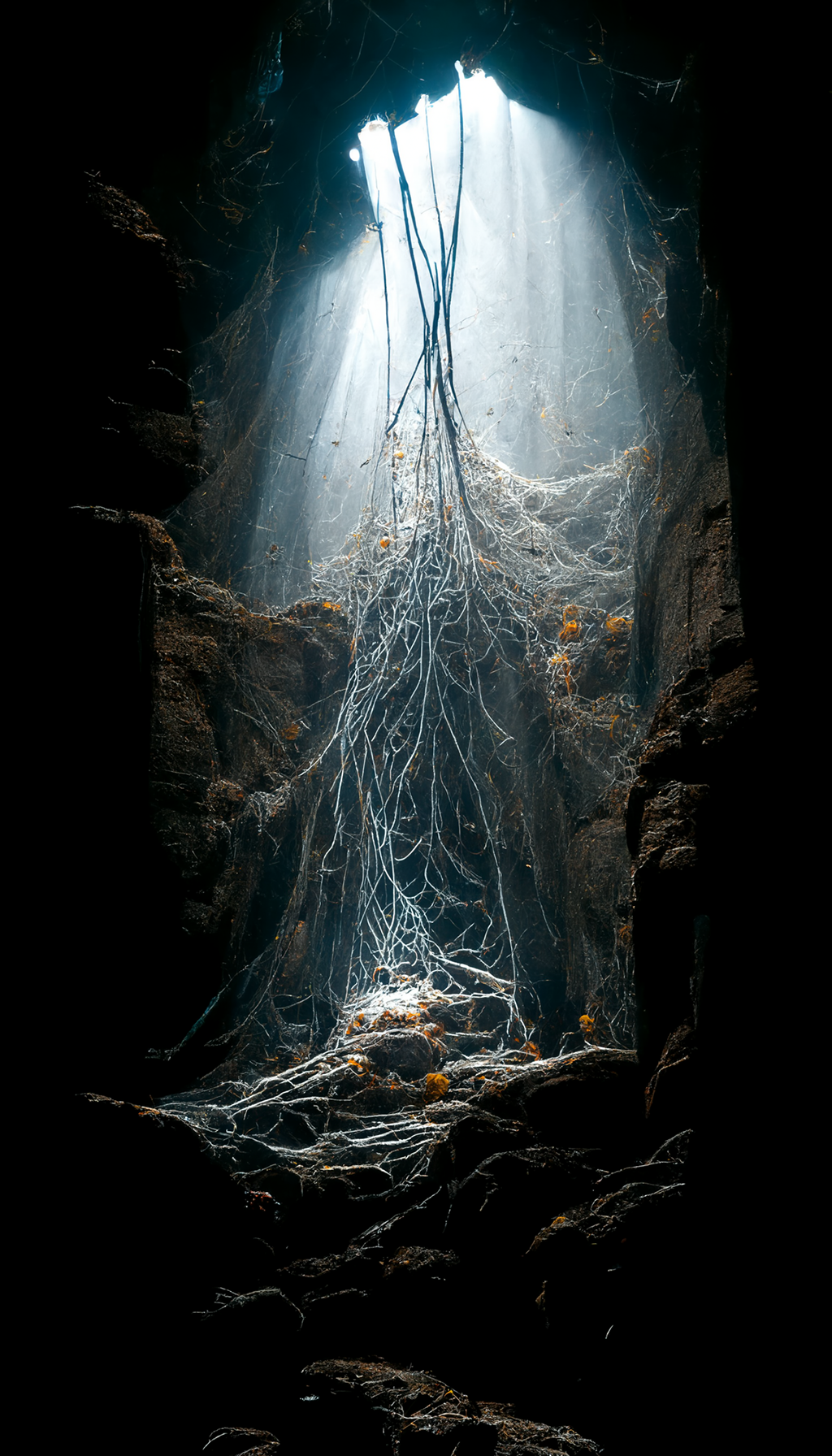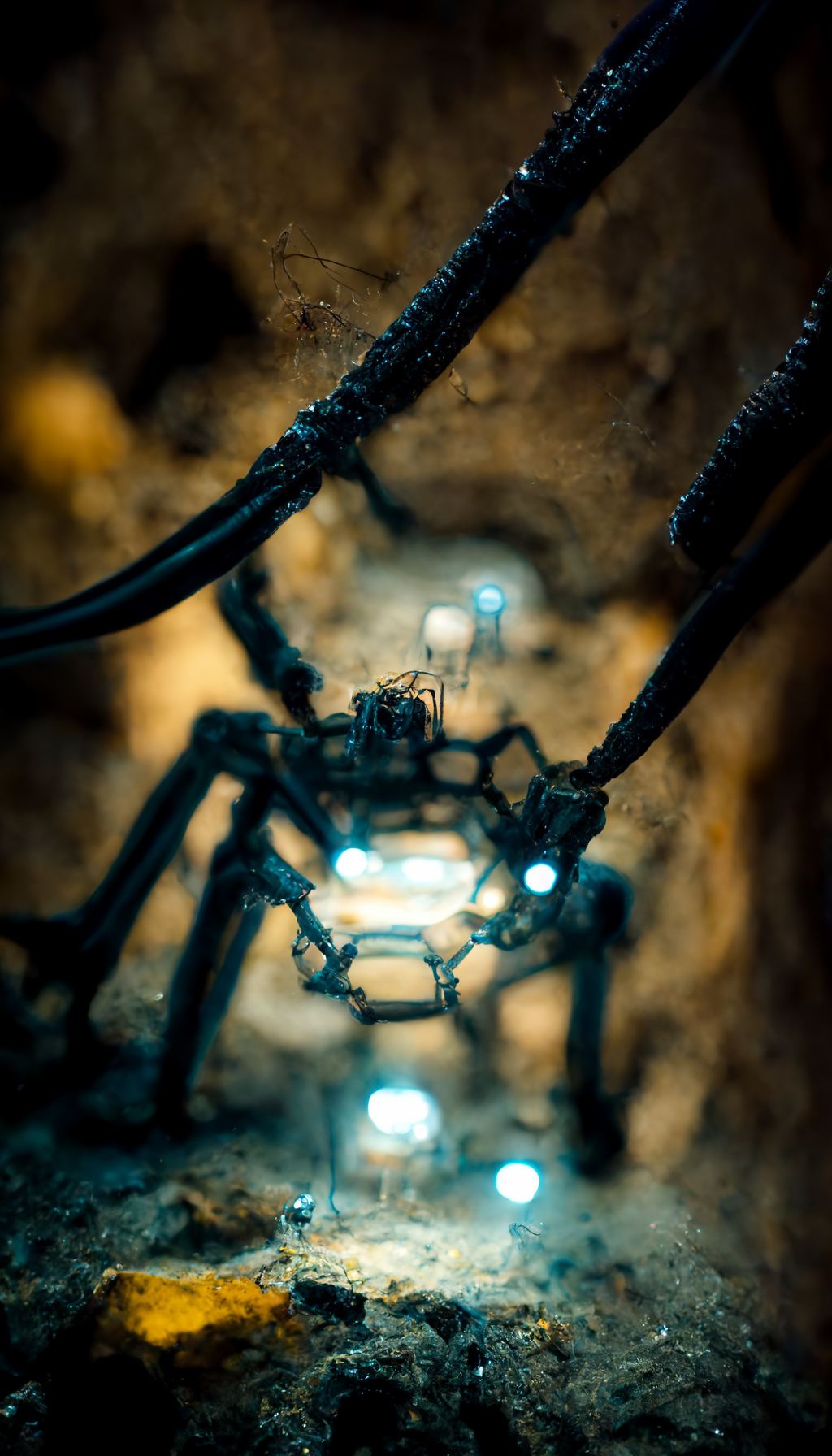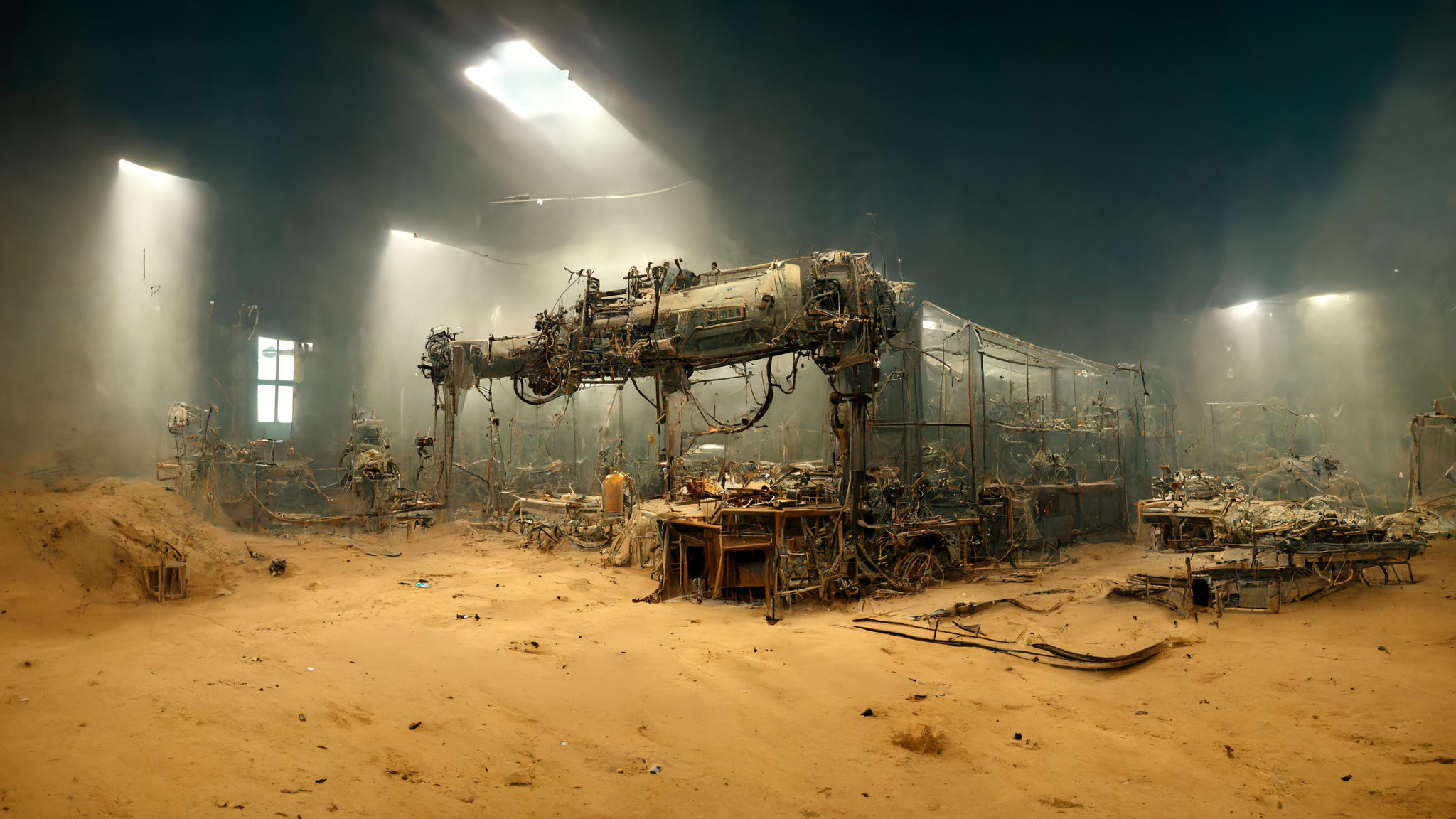
INSTITUTE FOR CONTROLLED SPELEOGENESIS
2011-2014 Collaboration with Geoff Manaugh | Automated generation, exploration, and documentation of subterranean cavities.
The project concept was conceived and developed in collaboration with Geoff Manaugh. Design and images were produced by WROT.
INTRO
(Project intro written by Geoff Manaugh)
The “Institute for Controlled Speleogenesis” is a fictional design project we originally set in the vast limestone province of Australia’s Nullarbor Plain. The Nullarbor Plain is a nearly treeless region, roughly the size of Nebraska. It is also the world’s largest karst landscape, and thus home to hundreds of natural caves. “There is a great variety of cave types under the Nullarbor,” as Australian Geographic explains, “but the plain’s most interesting features are long, deep systems (such the Old Homestead Cave), which are found only here, in the U.S. state of Florida, and on Mexico’s Yucatan Peninsula, all of which all have similar karst limestone layers.”
The Institute for Controlled Speleogenesis was imagined as a remote, thinly staffed site for applied geological research, where huge artificial caves could be generated below the Earth’s surface using a special acid mix—as safe as vinegar, but, importantly for our project, capable of dissolving limestone on a greatly accelerated timescale.
Subterranean spaces of every conceivable size, from tiny hollows and capillaries to vast megastructures, could thus be acid-etched into even the deepest karst formations, both rapidly and over decadal expanses of time. The resulting rooms, tunnels, and interconnected cave systems could be used for a wide range of purposes: generating speleo-pharmaceuticals, for example, as well as testing recreational caving equipment, experimenting with underground agricultural systems, or developing new technologies for subterranean navigation, communication, inhabitation, and mapping.
ABERRANT CAVERNS
Superficial scars hidden in this expansive desert landscape are a keyhole into a complex cave network teeming with miniature excavators, reshaping the world below. The familiar sight of erosion; typically shaped by wind, water, and time has been supplanted by the use of chemical compounds. The history of chemical use in mining is longstanding, and in recent years it has become pervasive. Cyanide, sulfuric acid, mercury, among many others are known by all for their lethality, but are used regularly to aid in the extraction of precious resources hidden below our feet. The Institute for Controlled Speleogenesis aims to explore the potential for chemical sculpting using “a special acid mix as safe as vinegar”, and through it the creation of new cave structures within a human timescale.


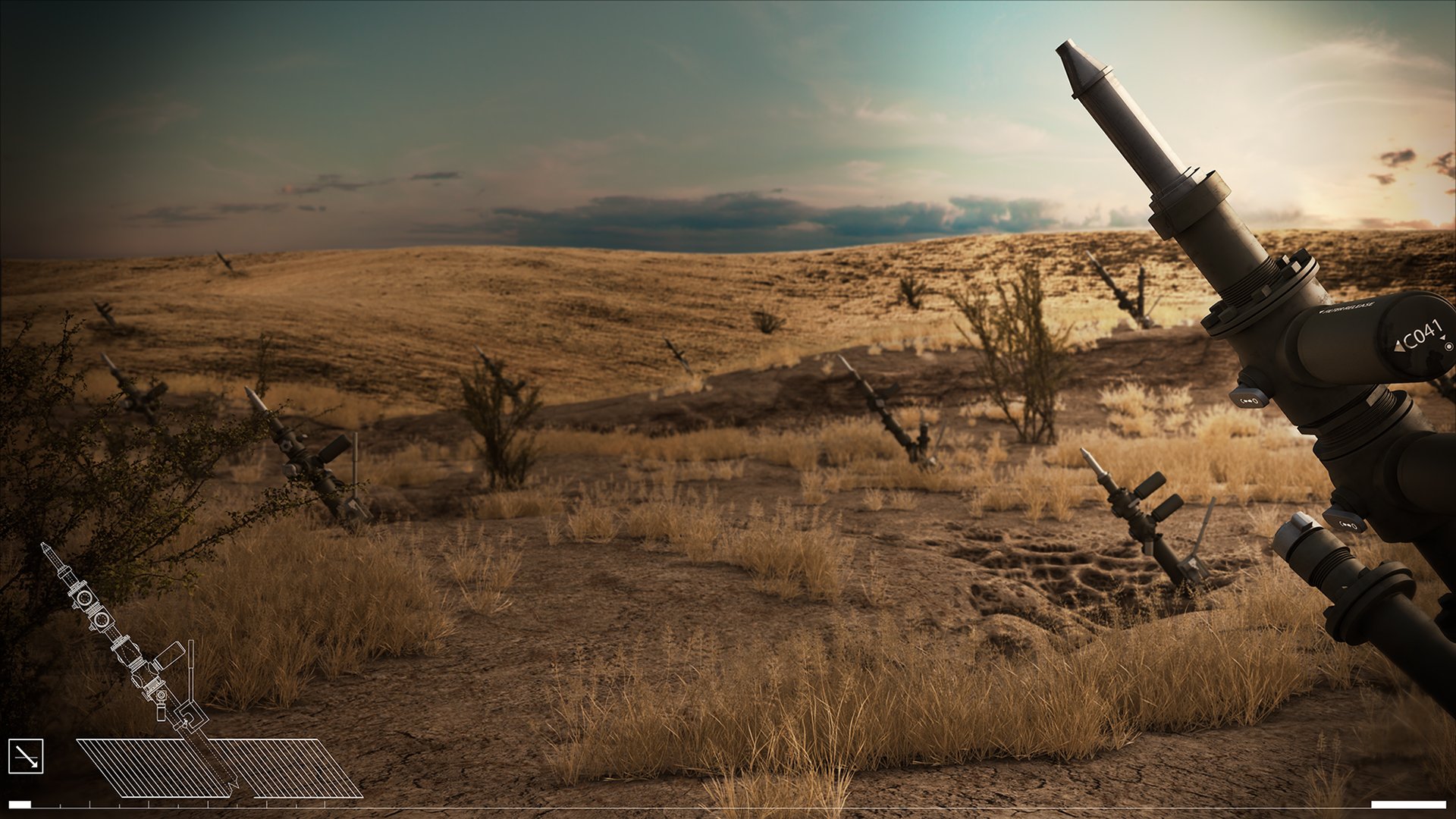

THE BONEYARD
Venturing below the surface uncovers a maze of recursive cavities, spiraling down in darkness. The porous limestone has given way to the rush of fluids which liquified it’s stable existence, leaving in its wake a beautiful and ever expanding void within it’s once intact mass. Slowly migrating deeper as the system grows, a swarm of drip modules cluster in areas targeted for expansion. The formations created are in part directed and intentional. No matter how directed the growth may be; gravity, fractures, and the varied strength of the stone exert their constant influence.
Mapping the voids as the cave grows through relay ping sensors in each dropper, the cave is accessed by the research team to record and document the resulting formations. As shafts are decommissioned from generation they are tested for their integrity and safety. They are then made available more a wide range of purposes, ranging from scientific research, to document storage and recreation.


THE SOLITARY FIELD LAB
Designed for slow, methodical, remote work; the field laboratory is stripped bare of all but it’s most essential components with limited to no need for human habitation. While the natural processes of geologic erosion typically operate on a time scale outside of human observation, the goal of the lab is to test and refine different chemical compounds capable of rapidly accelerating this process. These experiments are still slow by most accounts and are performed exposed to the elements. Meaningful results are expected to materialize over weeks, months, even occasionally years. Routine maintenance, resupplies, and intermittent sample examinations see on-site staff visit the lab, however these interactions are limited.
Anchoring the complex is a large wall carrying dozens of bladders, each containing 200 liters of experimental chemical solutions. Each bladder rests in a simple spring driven carriage maintains pressure on the bladder ensuring the flow of it’s contents as they are slowly released and the weight of the bladder diminishes. The amount of fluid released and the effectiveness of each tested compound, combined with the specific make-up of each stone sample can lead to drastically different resulting form, and structures.
Simple machines are left to their solitary work. Day in, day out working to find new ways to advance the buried labyrinth below.
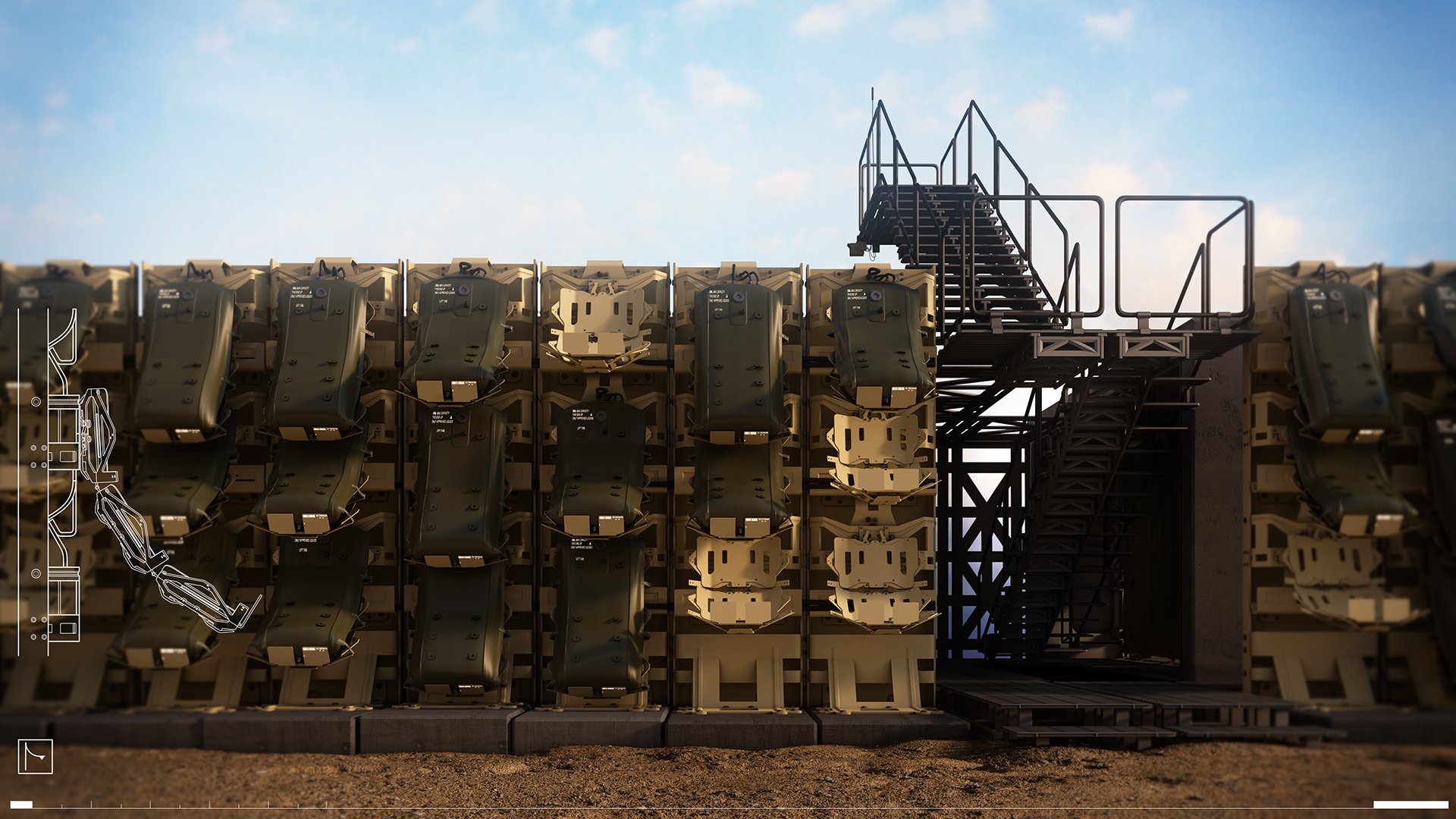

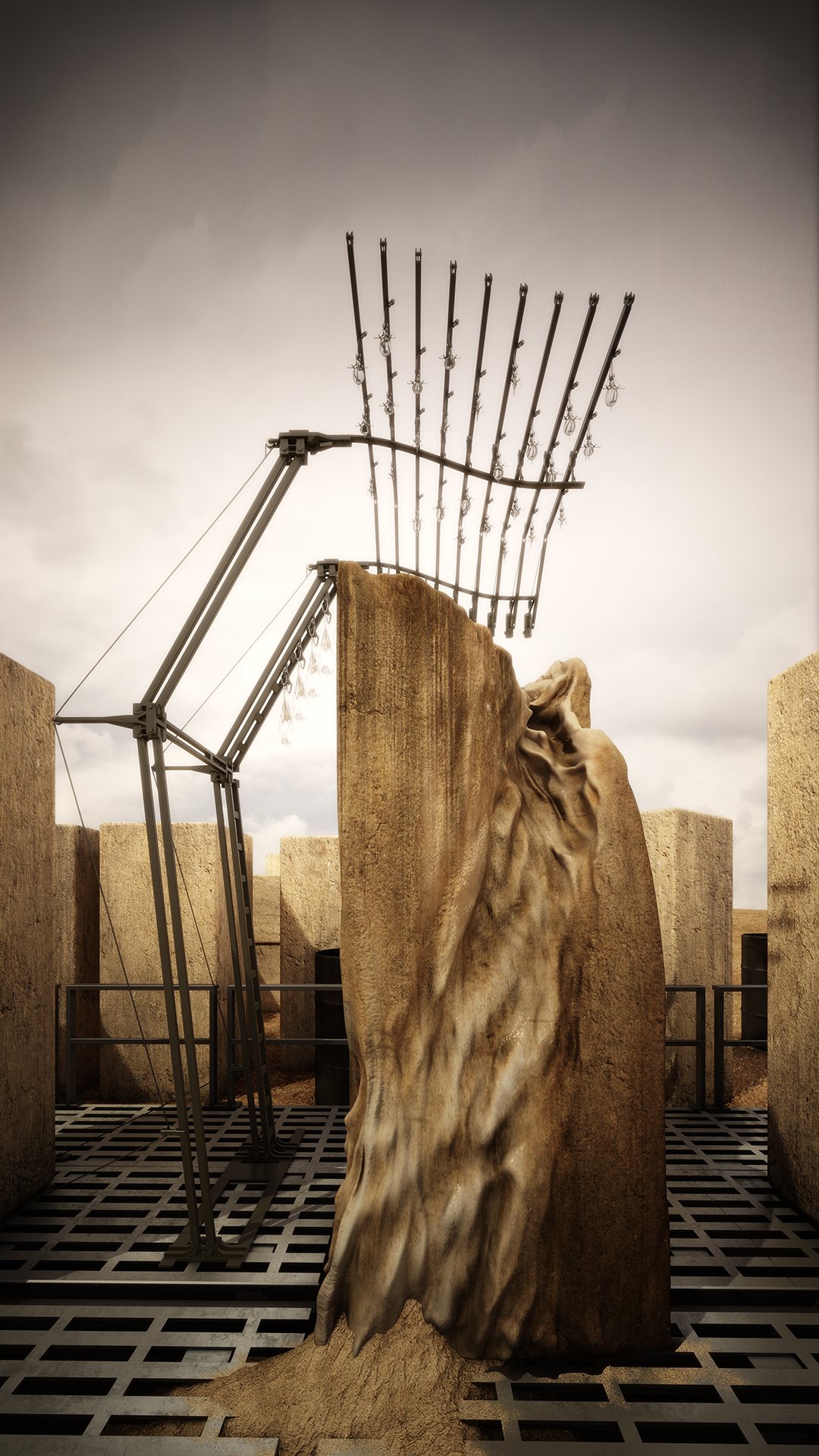

AUTOMATED TERRESTRIAL MAPPING
Through the use of unmanned aerial surveillance and subterranean scans and pings the speleogenesis is monitored and revised. Although the intended formations are cultivated below the surface, superficial cavities are occasionally created or revealed and must be closely monitored. A great deal of both risk and opportunity present themselves at the surface, presenting the need for constant surveillance.
Depicted below are a small scale surface intervention (left) where a drip irrigation system is deployed to create a entry with a more precise construction. A large injection array (center) using a pressurized system to move large quantities of solution to underlying areas of the cave network. These injection sites are outwardly the tell for a hidden world below. Much like oil derricks extracting resources from the earth, their density and scale across the landscape give you a glimpse into areas afforded the most resources for injection. Not much more than a simple kit of parts, the research center (right) is monitored regularly for safety reasons given it’s concentration of hazardous chemical agents, proprietary and sensitive IP and a lack of a regular human presence.
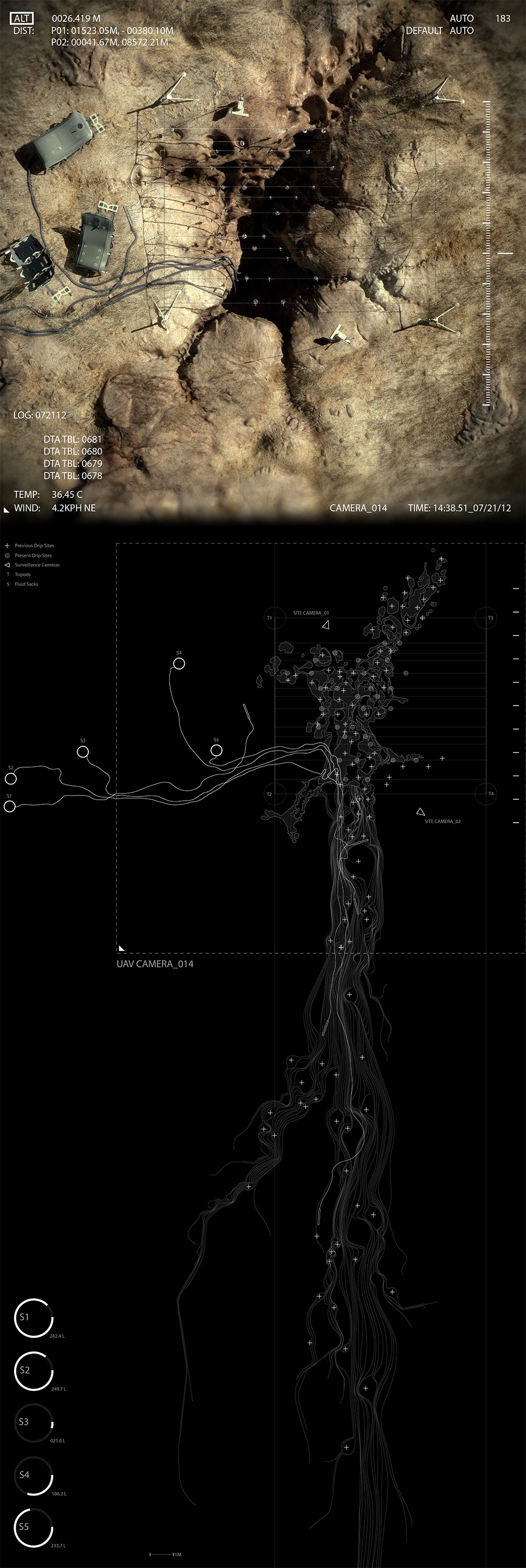
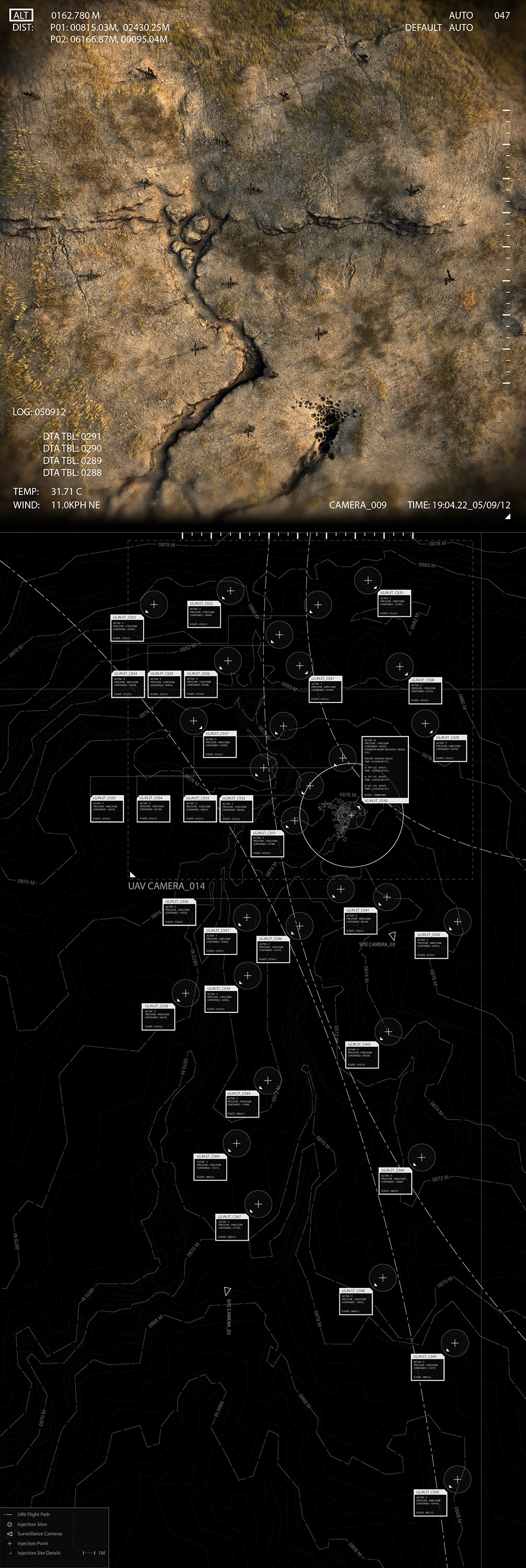
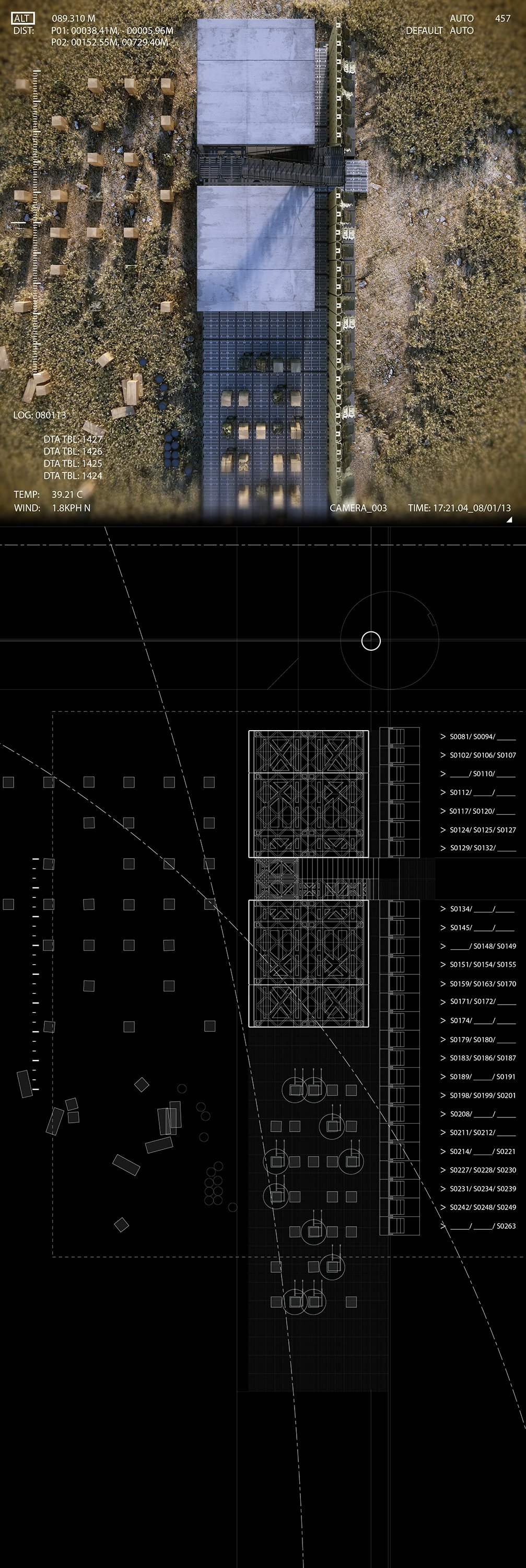
2022 | REVISITED
Over a decade after the project was started, I revisited the work intent on recreating the concept through newly released AI image generators. Using a simple set of command prompts meant to guide the AI towards the original vision, I removed myself from the process as ‘image creator’. True to the original intent, machine learning had now re-envisioned the entire project. Standing in new ground I couldn’t help but use every trick I could conjure to guide and edit the process. Attempting to bend the tools to my aesthetic, learning quickly that the core of my design sensibilities can be summed up in a few simple key strokes. The most compelling elements of AI image generators are their lack of precision, and the unexpected forms and details that emerge as a result. I find the resulting imagery quite compelling and seductive. The lack of precision in their ability to tell a story gives you a glimpse into what appears to be a vast and complex world without the narrative to stich it together. There is something to take away from the things unsaid in these images. Leaving your audience with enough space to fill in some of the blanks with their own imagination gives the work a breathe of fresh air.
